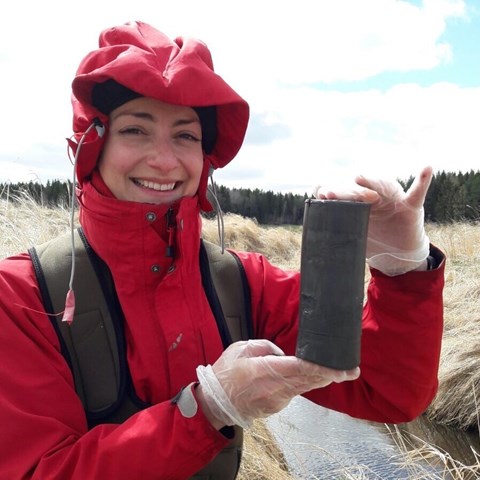Contact
Department of Aquatic Sciences and Assessment, Division of Geochemistry and Hydrology

Phosphorus transport in the landscape is described in a new thesis from the Department of Aquatic Sciences and Assessment. Legacy phosphorus in the streambed sediment, as well as short time variations in water chemistry, has been the focus of the four studies carried out in Sävjaån catchment close to Uppsala.
Extensive amounts of nutrients leading to eutrophication in our lakes and streams is a big challenge for water management. Despite several decades of research, all the details regarding timing and sources of phosphorus transport is not known as well as how changed conditions (e.g. climate change) might affect the transport. Emma Lannergård has in her thesis done research regarding phosphorus legacy in streambed sediment as well as how short term changes in water chemistry can explain the transport of phosphorus in the landscape.
Emma Lannergård has found that considerable amounts of phosphorus are stored in lake and streambed sediment. The size of the stores in the streambed sediment was a new and important insight since these stores could affect eutrophication during low flow conditions in the stream. This new knowledge also shows the importance of well-planned ditch management.
Three of the studies in the thesis used data from an in-situ sensor. These sensors are used to monitor short term variations in water chemistry, and here an in-situ sensor was deployed in Sävjaån monitoring the water every 15th minute. Usually, water chemistry is monitored by monthly grab samples which are analysed in the laboratory. With the information from the sensor, the annual transport of phosphorus was investigated showing that large quantities of phosphorus were transported during high flows e.g. spring floods.
These high flow events were further analysed, and the data from the in-situ sensor showed that the turbidity increased fast when flow increased. This indicates that the particles come from sources in close proximity to the sensor, e.g. the streambed or riparian zone. Therefore, it is important to keep near-stream areas vegetated also during the winter to reduce the risk of particle erosion to the stream.
Information from the sensor was also used to calibrate a water quality model that simulated changes in phosphorus dynamics over time.
The thesis of Emma Lannergård has improved the knowledge of different phosphorus sources as well as when and how it is transported in the landscape. With this new information, better-informed management decisions can be made that could reduce eutrophication in lakes and streams.
Emma Lannergård defended her thesis on the 10th of December 2021. Her opponent was Helen Jarvie from Waterloo University in Canada. The title of the thesis is ”Phosphorus transport in the landscape – Integrating high-frequency monitoring, phosphorus geochemistry and modelling to improve water management”.
Emma Lannergård was funded through FORMAS.